Ficus Triangularis variegata
This product is available for shipping only in Bangalore
Ficus Triangularis variegata, a magnificent variegated plant with beautiful 2-3″ triangular leaves, so unique with no two leaves alike. A small sized tree or shrub grows up to 3 m tall under cultivation. The triangular leaf has irregular yellowish-white edges, with shades of green sections in the center.
Plant Height: approx 2 ft 7 inches including the pot
Pot size : 9 inches nursery pot
- Estimated Delivery : Up to 3 business days
- Free Shipping & Returns : On all orders over ₹550 in Bangalore
Ficus Triangularis variegata is a pan-tropical genus of trees, shrubs and vines occupying a wide variety of ecological niches; most are evergreen, but some deciduous species are endemic to areas outside of the tropics and to higher elevations. Fig species are characterized by their unique inflorescence and distinctive pollination syndrome.
1. Light requirements
• Thrives in bright, indirect light.
• Tolerates some direct morning sun, but avoid harsh afternoon rays to prevent leaf scorch.
• Low light may lead to leggy growth and fading of variegation.
2. Temperature and humidity
• Prefers warm indoor temperatures between 18–27°C (65–80°F).
• Keep away from cold drafts and sudden temperature drops.
• Enjoys moderate to high humidity; occasional misting or a pebble tray helps, especially in dry environments.
3. Watering
• Water when the top 1–2 inches of soil feel dry to the touch.
• Ensure the pot has good drainage to avoid root rot.
• In winter, reduce watering frequency as the plant’s growth slows.
4. Soil type
• Use a well-draining potting mix—an aroid or cactus mix is ideal.
• You can mix regular potting soil with perlite or sand to improve aeration.
• Avoid compact soils that retain too much moisture.
5. Fertilizing
• Feed monthly during the growing season (spring and summer) with a balanced liquid fertilizer.
• Avoid fertilizing in winter when growth is minimal.
• Too much fertilizer can cause salt buildup; flush the soil every few months.
6. Pruning
• Prune lightly to maintain shape and remove any leggy or damaged stems.
• Best done in spring or early summer.
• Always use sterilized tools to prevent disease spread.
7. Repotting
• Repot every 2–3 years or when roots become pot-bound.
• Spring is the best time to repot.
• Choose a pot only slightly larger than the current one to prevent overwatering issues.
8. Pests and problems
• Watch for common pests like spider mites, mealybugs, and scale.
• Treat infestations with insecticidal soap or neem oil.
• Dropping leaves may indicate overwatering, underwatering, or sudden light changes.
9. Propagation
• Can be propagated through stem cuttings.
• Root in water or moist soil under warm, humid conditions.
• Patience is key, as rooting may take several weeks.
10. Toxicity
• Like most ficus species, it is toxic to pets if ingested.
• Keep out of reach of cats, dogs, and small children.
Conclusion
Ficus Triangularis variegata is a striking, slow-growing houseplant that adds elegance with its unique triangle-shaped, creamy-edged leaves. With the right balance of light, water, and humidity, it rewards you with lush, variegated foliage that can be a conversation piece in any indoor garden.
** Plants photos are for representation purpose only. We will make best efforts to send the plants as in photos itself, however it is not always guaranteed as plants might overgrow or shrink depending on the season, care or age. Trust us, we want to give you the best.
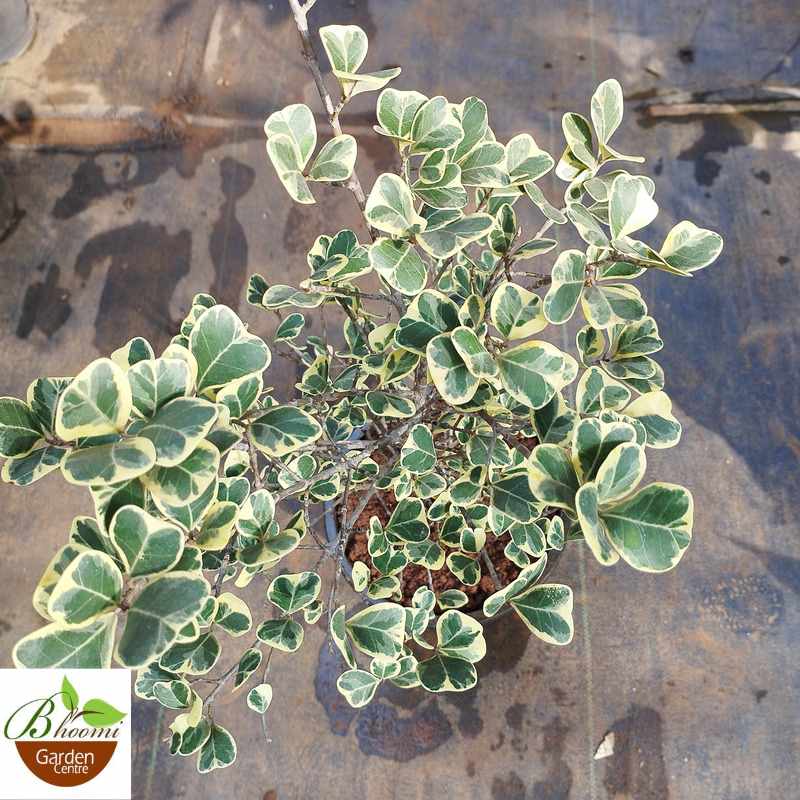

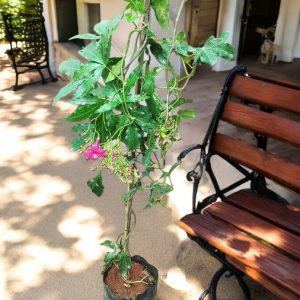
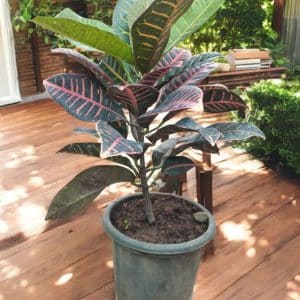
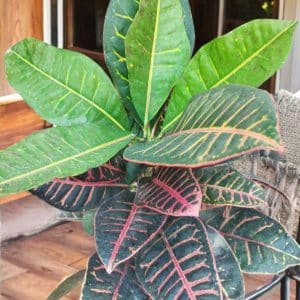



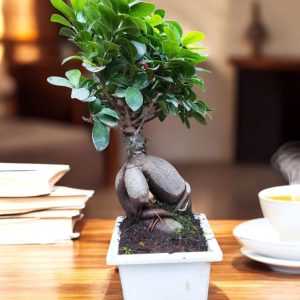
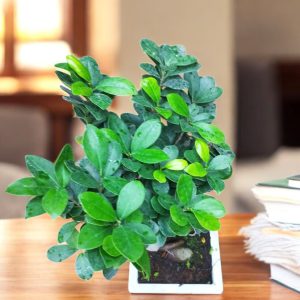


Reviews
There are no reviews yet.